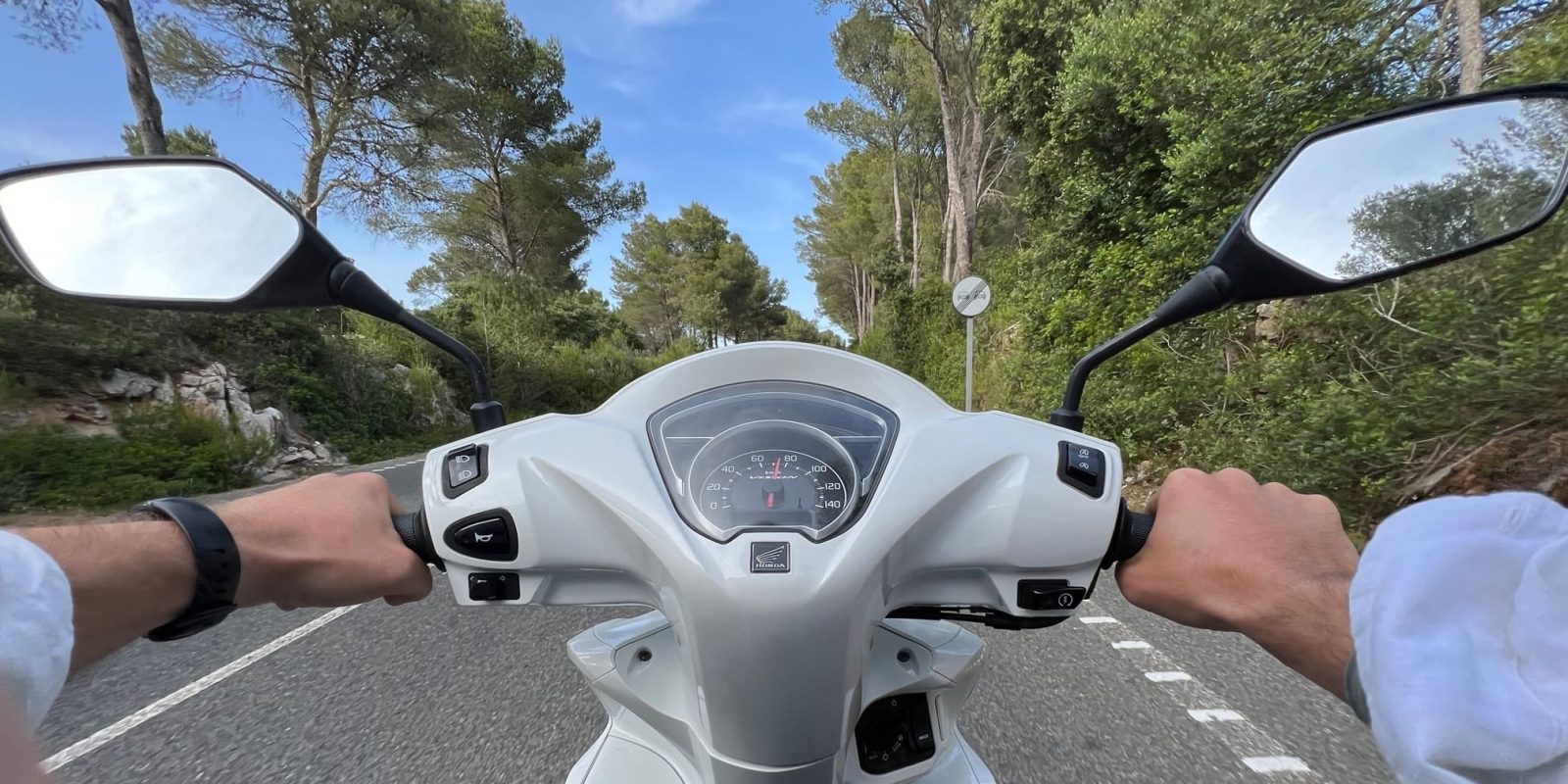
As an electric bike journalist, I pretty much live life on two-wheels. That means everything from electric bicycles to e-scooters, mopeds, and motorcycles. It’s the only way my wife and I like to travel our city. After going electric years ago, it’s been a while since I threw my leg over a bike with a combustion engine. At least, not until last week, which gave me a vivid reminder of why I went electric in the first place and never looked back.
When my wife and I recently took a trip to Menorca, it was a no-brainer to rent a motorbike instead of a car to explore this beautiful Spanish island.
Cruising on two wheels through the mountain roads and down through the winding trails to hidden beaches is just such a profoundly different experience to doing the same in car. You get to actually live in the moment and experience the environment around you first hand, instead of seeing everything go by through a framed glass window as if you were watching it on TV. If you’ve never cracked a copy of Zen and the Art of Motorcycle Maintenance, it’s worth the read and does a much better job than me at imparting the experience.
And so it simply made sense that we rent a bike to explore Menorca. The only hangup was that this sleepy little tucked-away island didn’t have any electric motorbikes available to rent. It’s not that they don’t exist in Spain – there are even great locally made options like Barcelona-based Silence electric scooters. But those sophisticated rides don’t seem to have made it to the island’s rental companies yet.
While I’m definitely in camp electric, I’m not so high and mighty that I can’t drive a gas-powered vehicle. And so we found ourselves a cute little Honda Vision 110.

It’s not exactly the pinnacle of Japanese motorbike engineering, but I figured the bike should be a fine little steel-framed steed for our four days on the island.
With one main highway (if you could call it that) running down the center of the 700 square km (270 square mile) island and the remainder made up of small, winding country roads, a modest bike was all that was necessary for exploring
A quick inspection showed that everything seemed to be in order. The tires looked good, the brakes were crisp, and the registration was under the seat, tucked away along with a small roadside kit. A closer look at the tool kit revealed a single lonely flat head screwdriver and a few empty spaces for some other long forgotten tools.
Good enough, let’s do it!

Now let’s get something straight at the outset: I don’t intend to bash this little guy. As a vehicle, the scooter was just fine and served us admirably.
It took us to some of the most beautiful beaches we’ve seen in Europe and with very little complaining. For the most part, it was a champ.
But the experience also firmly reinforced the many downsides of combustion engine-powered motorbikes and why I gave them up a while ago.
Not the least of which was knowing that hidden below the Honda’s underseat trunk were a hundred moving parts making up that gas-powered drivetrain, any one of which could present a problem and leave us stranded in the middle of nowhere. A fouled spark plug, dirty oil, worn piston rings, the list of unseen potential problems lurking underneath me stacked up in the back of my mind.

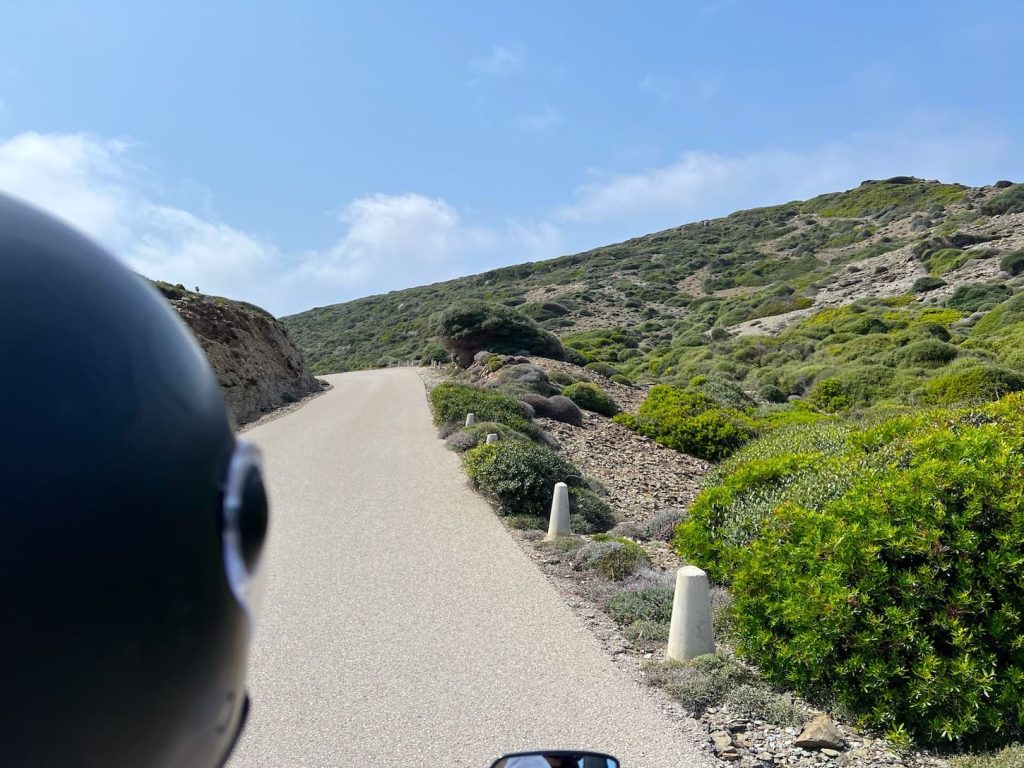
And don’t for a second think I’m some soft-handed millennial that is afraid of turning a wrench.
I grew up working on engines with my dad. I learned to shift in a ’64 Corvair with a throw so long I had to lean forward to find first and third gear. My high school car was three times my age and that meant maintenance was a regular occurrence, often in the parking lot. I’m a mechanical engineer and a lifelong tinkerer.
But like any good engineer, when new tools come along, I test them and adopt them if they’re truly better. And when it comes to motorbikes, electric drive is simply better.
This experience reinforced that for me in a number of ways. Here’s how.

Gas-powered motorbikes are annoyingly loud
I had forgotten just how quiet electric motorcycles are until I fired up that little Honda.
Suffice it to say that a 110cc engine is on the smaller end of the spectrum, and yet here my wife and I were having to raise our voices to talk over that small idling engine.
It was even more of a bummer considering that back home we’re used to going everywhere by electric motorbike, and we enjoy talking along the way. But where it really affected us was with navigation.
The bike’s noise level wasn’t too terrible at rest and we could still hear each other, but the whining exhaust quickly shot up in decibels along with the RPMs.
With no phone holder on the scooter for me to see my GPS, my wife had to play navigator from the pillion seat and tell me when turns were coming up. To make matters worse, for some reason my Waze app decided to integrate into the local culture and began speaking Spanish as soon as we touched down on the island. So there we were, flying down the road, my wife holding my phone in one hand and me in the other, yelling “make a left!” into my ear while my phone tries to shout a muffled “a la izquierda!” to no one in particular.
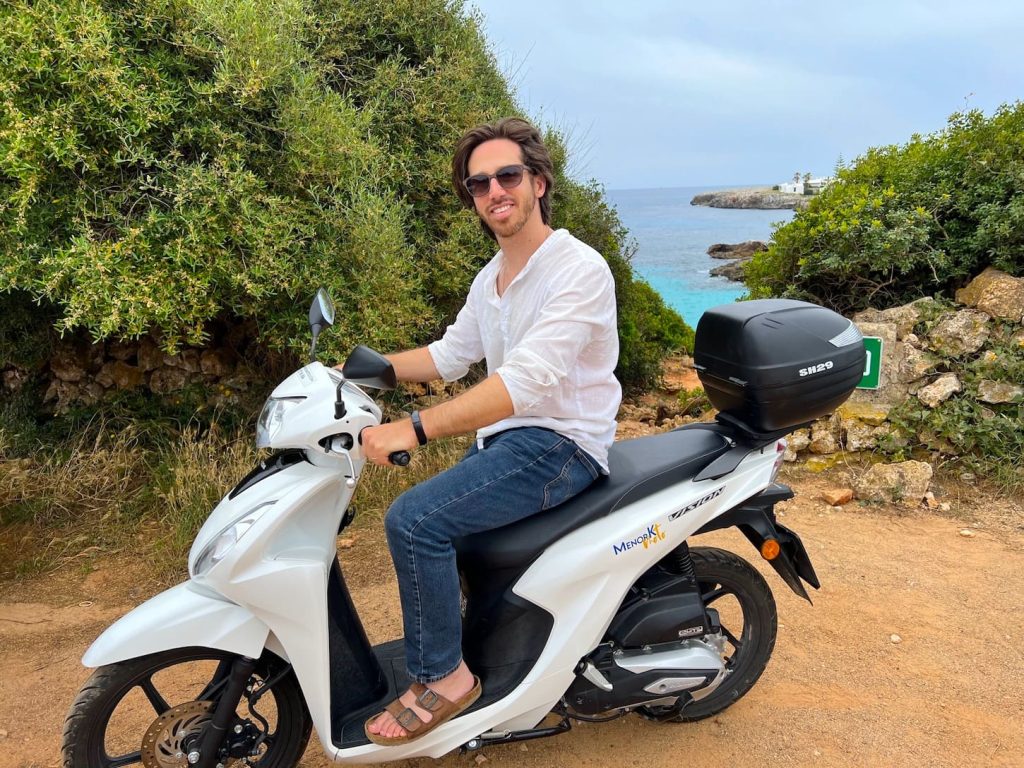
Then there was the issue of all that extra noise along the way. When we’re cruising along beach roads or the forested mountain passes with the wind in our faces, the last thing we want to hear is the high-pitched whine of exhaust. The sound really took us out of the moment of enjoying the nature around us. We wanted to take in the trees, not listen to a chainsaw.
We’re both used to my electric motorbikes that are either silent or really, really quiet. The lack of noise isn’t a bug, it’s a feature. It allows us to truly take in our surroundings, and it’s a major advantage to electric motorbikes.
Then there was the guilty feeling I had when riding through small villages and neighborhoods early in the morning. Our “VRRRRrRrRRrrRrrRrrrrrrrrrr!” ripped through the cool morning air, shattering the peace and quiet of these small towns and surely disturbing everyone living along the sides of those narrow roads and alleyways.
When I ride my electric scooters and motorcycles back home, I never have to worry about bothering my neighbors early in the morning or late at night. Babies can drift off, parents can sleep in, and I can ride on, all without anyone being bothered.
But when we came to town on our little Honda, everyone knew about it.
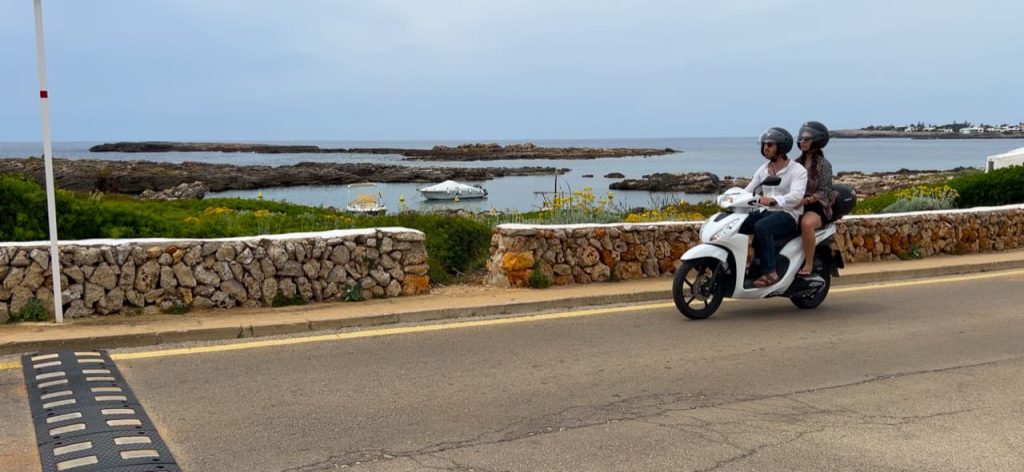
Now I get it, some people like the sound of their combustion motorbikes. For them, it’s part of the experience. And while I understand that in theory, I’d counter by saying that that particular experience takes away from the larger experience.
If you’re listening to only the sounds of your bike, then you aren’t listening to everything else around you. If you’re only smelling your own exhaust, then you aren’t taking in the salty spray hanging in the sea breeze or the smell of the local cuisine as you ride past roadside restaurants.
You may have gotten used to the senses introduced by your bike, but when you finally get the chance to remove them, you can truly experience every other sense nature has to offer.
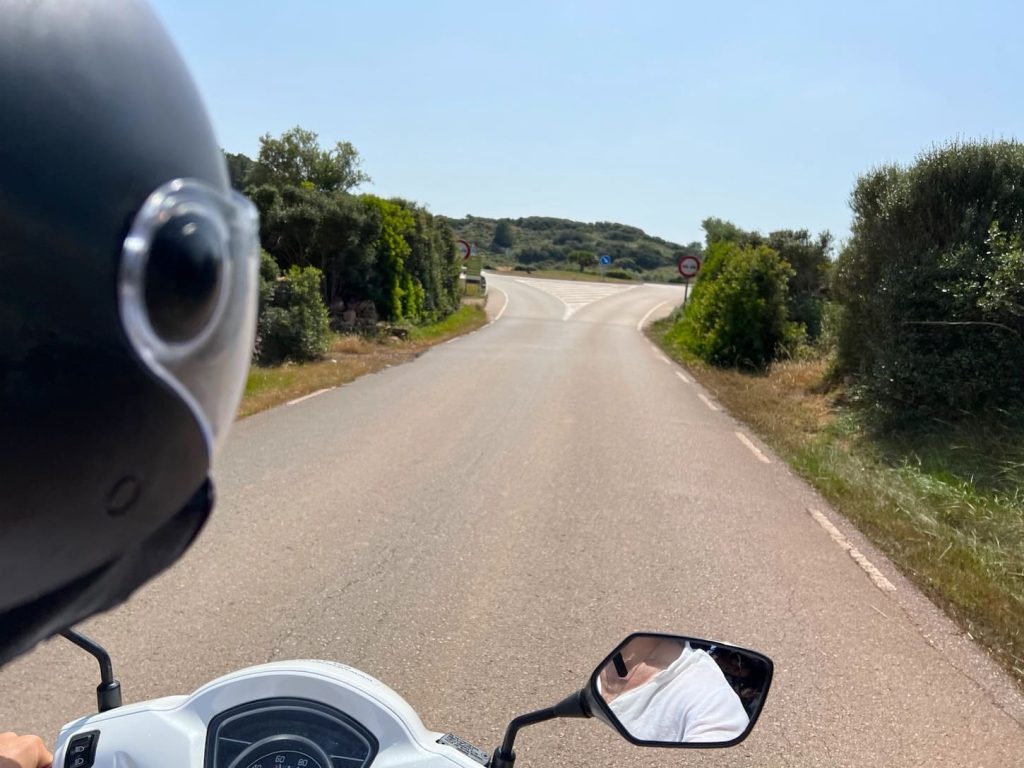
Where’d the power go?
Gas motorcycle enthusiasts are probably going to attribute many of my “problems” to this being a low-power scooter, but that would be a mistake.
I don’t mind low power. I have a couple electric scooters that are either 125cc-equivalent (in the case of my Gogoro) or slightly below 125cc-equivalent (in the case of my NIU). So they’re both around the same power level as this bike, except that they accelerate like rockets. It’s a great reminder that the power level of a bike isn’t the only concern. Torque and power delivery are key. And the lack thereof at the low end, well, it’s quite noticeable on a combustion-engine compared to an electric motor.
And I noticed it immediately. In fact, quite embarrassingly I almost dropped us in the first 10 seconds on the bike (don’t tell my wife that, she thought everything was fine). I rolled out of the parking spot after receiving the bike, pulled a lazy U-turn, and twisted the throttle to stand the bike back up. Except, it didn’t stand back up. It just stayed at the same hard lean angle from my U-turn. That’s the split second when I remembered how poor the low-end torque is on combustion engines. The bike’s power was there, it just took a second or two to build up. A second or two that I didn’t have at that specific moment.
From then on I recalibrated my throttle control to account for it, which I never had to do on my electric scooters and motorcycles. Even the smallest and weakest of them drop their power with a boom that defies their small stature. The launch on an electric motorbike is something to behold, and I highly recommend trying it if you’ve never had the opportunity. I’ve ridden every electric motorcycle you can buy, from brawny sport bikes to tiny commuters, and they all share that impressive low-end takeoff.
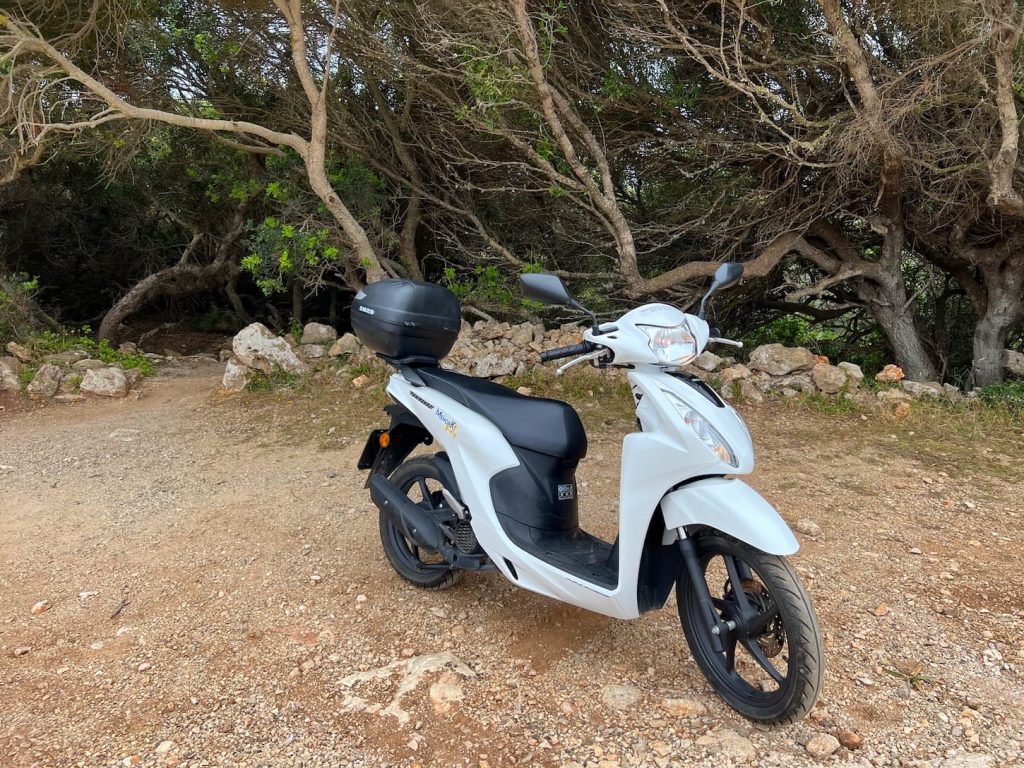
Believe it or not, I had range anxiety from a gas-powered motorbike
I know this is going to sound strange, but riding this Honda gave me range anxiety.
Allow me to explain. Range anxiety is often attributed to electric vehicles when new owners worry they won’t be able to find a place to charge, and thus have anxiety over how much range their EV has.
Ironically, many seasoned electric vehicle owners experience the opposite. For me, I never have range anxiety because my home is my “fueling station.” I can charge up every night, meaning every day I have a “full tank,” so to speak. There’s no need to worry about range since I’m starting every day with maximum range.
My Gogoro electric scooter makes it even better. I could charge it at home if I wanted, but it also works within a network of battery swap stations that are spread around my city. I simply roll in, swap my depleted batteries for fully-charged batteries, and roll out in about 30 seconds. It’s faster and easier than a fuel swap and I don’t end up needing to wash my hands from a fuel pump afterward.
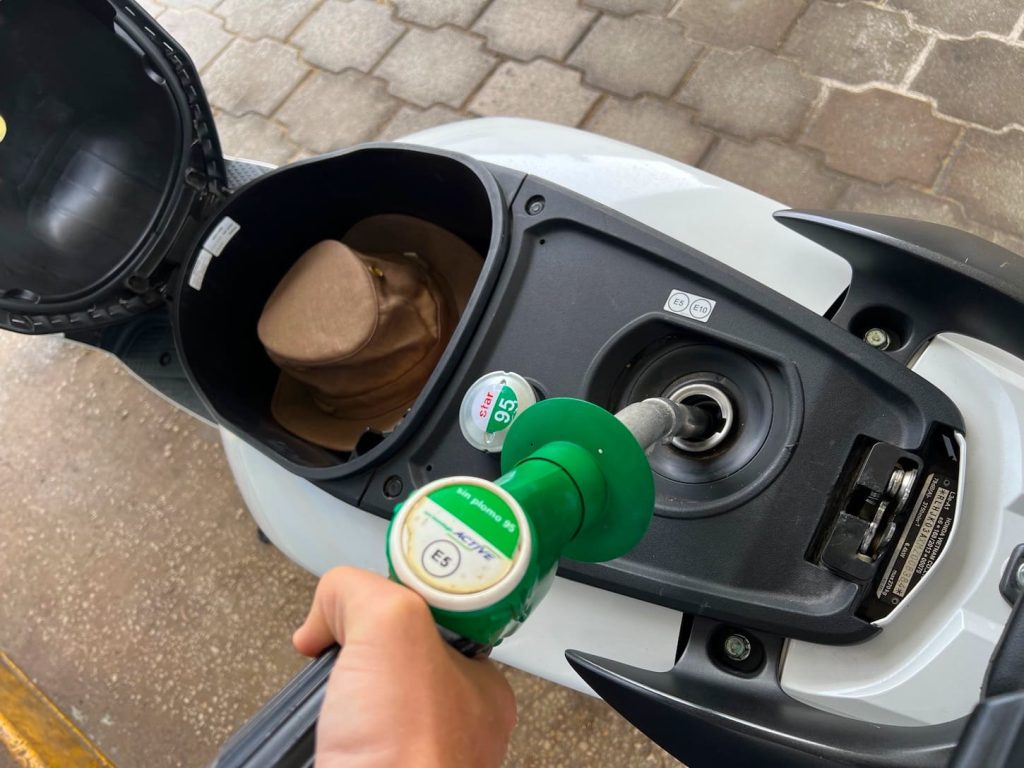
But with our little Honda, I never knew where I’d find a gas station on these remote roads and thus I would worry when the tank level started to dip. To make matters worse, the small digital fuel gauge seemed to jump up or down between 25% or 50% remaining fuel depending on the angle of the ground I was parked on, further muddying the waters.
In the end I never actually ran out of fuel, but I sure thought I might a couple times. And the added stress of wondering where I would find a fuel stop didn’t add to my enjoyment, that’s for sure.
It’s shaking, but that’s apparently normal?
Another aspect that caught me off-guard after many years of nearly exclusively riding electric motorbikes was just how much the bike vibrated.
Sitting at a red light or intersection felt (and sounded) like we were riding a lawnmower. Accelerating hard turned it into a Vegas motel bed full of quarters.
The extra heat coming off the engine and exhaust at stops added to the effect, providing a multi-sensory experience for our ears, noses, butts, and thighs.
All of this was quite foreign to us, as it’s not something we experience when riding our electric motorbikes back home.
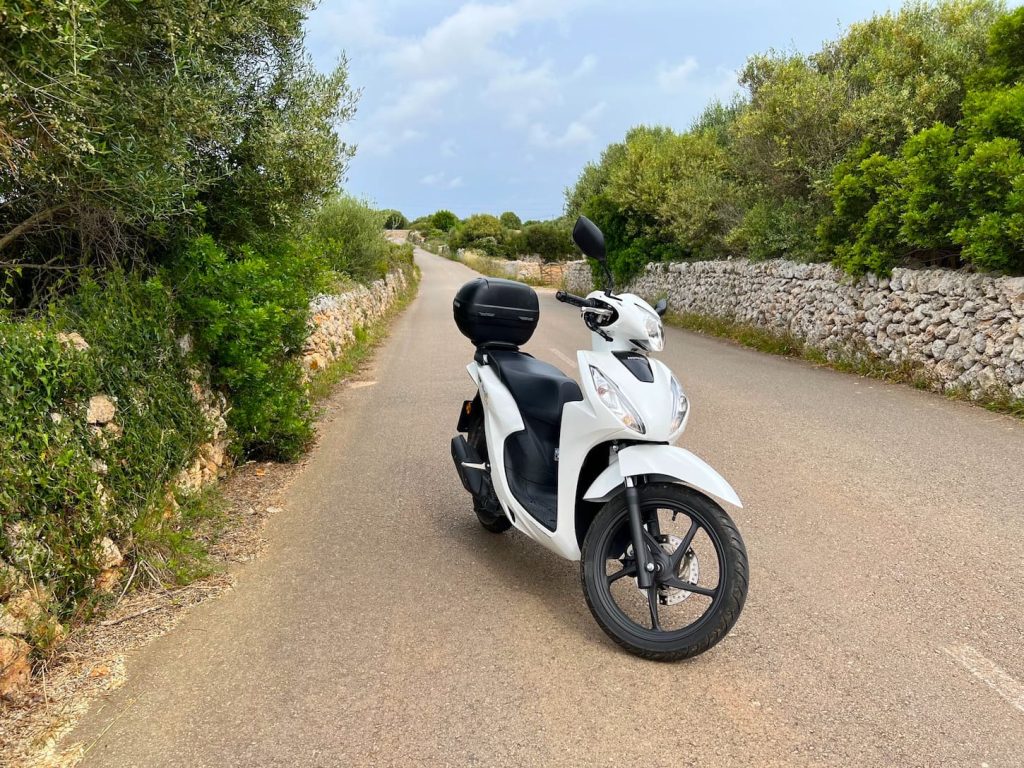
And the whole while I couldn’t help but worry about that nagging list of potential maintenance issues that could end up leaving us stranded.
Fortunately for us and to its credit, that little Honda was a trooper and didn’t present any large mechanical problems. It wasn’t particularly fast, mind you. We could hit 85 km/h (53 mph) downhill, but steeper uphills resulted in an argument between me and the bike that usually ended with us compromising somewhere around 55 km/h (34 mph). But throughout its four days with us, we never suffered any debilitating engine-linked maintenance issues.
It wasn’t completely trouble-free, but its engine can’t take the blame for issues like the seat latch frequently jamming and preventing us from closing it. Fortunately, each of its small issues were fixable on the side of the road or the trailhead to a beach with just that one lonely flathead screwdriver in its roadside kit. Never discount a brave little tool.

Again, I don’t mean to denigrate this little Honda in and of itself. And I still feel that renting a motorbike on vacation is so much better than a car.
We were able to truly experience the island, the culture, the nature, and every bit of every part of the trip. It took us to some of the most beautiful places I’ve seen in a long time. From sandy beaches to boulder-strewn inlets, the secluded nooks and crannies of the island were ours to explore. And while this shouldn’t be the deciding factor, it turns out that topless and nude sunbathing in Spain increases from the already generous numbers when you find the extra-secluded beaches. I even got to try my own hand at Spanish skinny-dipping, which lasted a few relaxing minutes until I put my head under the surface and the crystal clear water revealed just how many jellyfish were swimming around me. On second thought, bathing suits protecting the important bits seems like a wise idea.
Top comment by Tracy
"Now I get it, some people like the sound of their combustion motorbikes. For them, it’s part of the experience"
Part of the experience everyone around them has to "enjoy" whether they want to or not.
Really looking forward to a future where fossil fuel driven machines are a tiny minority 😄
Having a motorbike to reach those far flung and hard-to-access areas is a benefit that I’ll never be ready to give up. In the countryside we could enter places we simply wouldn’t have reached in a car. In the cities we were able to park in places we couldn’t have fit in a car (the US really needs to copy Europe’s motorcycle parking spots).

And I’ll admit that despite the worries in the back of my mind, the bike held up for us well, up to and including when we coasted back in to return it four days later with an extra 250 klicks on the odometer. It just wasn’t the same amazing experience that we could have had on an electric motorbike.
It was louder. Rougher. Stinkier. Weaker. Basically, it was an all-around worse experience compared to all the miles we’ve put on electric mopeds, scooters, and motorcycles. But the bike itself can’t really be blamed. That’s just what you get with a combustion engine. They can’t match the performance of an equally powerful electric motor. They can’t match the ownership experience of an electric vehicle with its reduced maintenance, quieter operation and more enjoyable riding experience. It’s just older, dated technology that has since been improved with the more pleasant alternative of electric drive.
And it’s not that combustion engines will ever totally disappear. People still ride horses. There’s something romantic about it. And the die-hards will probably be riding gas-powered motorcycles 100 years from now too. It could end up being an expensive niche hobby, the way owning horses is now. But for everyday riding or vacation travel, there’s just no better way to get around than on an electric motorbike. My wife and I discovered that years ago, and this trip only reinforced it.
FTC: We use income earning auto affiliate links. More.




Comments